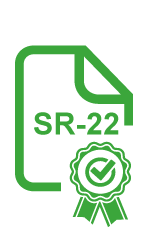You, or someone you care about, have just been arrested for DUI or DWI. What now?
First: You only have a limited time to request a hearing with the Department of Motor Vehicles to avoid automatically losing your license. In California, that time limit is 10 days from the date of your arrest to request a DMV hearing. Other states have different deadlines. It is critical that you contact a qualified DUI or DWI lawyer in your state as soon as possible to avoid the automatic loss of your driving privileges. In California, if you miss that deadline, you have waived your right to a hearing, and your license will automatically be suspended after 30 days, period. Do not miss this deadline! By filing the hearing request (and I do it by fax for all my clients, to prove it was done on time), your driving privileges are not suspended after 30 days. Instead, you are allowed to drive as if the DUI arrest never happened, until and unless you lose the DMV hearing, which will be scheduled for months away..
Next: do not assume all is lost. The issues that win cases are not always known at the outset. They require investigation, and you may not necessarily know what to look for. A good DUI lawyer will. Just because a breath test result is a .12, or a blood test result is a .15, don’t assume that your case is not worth fighting.
For example, in any case, involving a breath test, I will obtain the calibration records, maintenance history, and accuracy checks of the machine that was used to test my client. If there are problems in any of these areas, the results may be excluded. If it is a blood test, I insist upon obtaining a “split” of the blood sample for independent testing. There are certain requirements about how these blood samples are to be taken and preserved. If there is an inadequate level of preservative or anti-coagulant, the blood may actually ferment and produce its own alcohol, rendering the results completely meaningless.
In our justice system, the prosecution bears the burden of proof, meaning that in order to earn a conviction, the prosecutor must convince the finder of the fact of your guilt beyond a reasonable doubt. In California, where I practice, that means that all 12 jurors must be convinced of your guilt beyond a reasonable doubt. If even one juror votes “not guilty”, the jury is hung, and more often than not, the case is dismissed. So how does the prosecution go about its business of trying to prove guilt?
There are four distinct aspects to the case that a prosecutor will use: driving pattern, physical appearance, Field Sobriety Test performance, and chemical test results. The case is like a table with four legs; if one of those legs is broken, the table cannot stand. Likewise, if there is reasonable doubt regarding any aspect of the case, an accused should be acquitted.
The driving pattern that police officers typically report can be incomplete, and one-sided. They may only jot down those things that the driver does wrong. A trained DUI defense lawyer will point out the many things their client does right. By pointing out the ways in which a driving pattern is consistent with sobriety, a DUI lawyer can rebut this aspect of the prosecution’s case.
Physical symptoms may appear at first glance to be damning evidence of guilt; they can be an opportunity to point out inaccuracies in the investigation done by the officer. Police will point to red, watery eyes as a symptom of impairment, but may not bother to ask if someone is fatigued, has allergies, has been around cigarette smoke, or if there is any other reason for red eyes. An odor of alcohol on the breath may sound bad at first blush, but it is really the mixer in the beverage that has an odor, and not the alcohol itself. If you have any questions about this, drink a 6-pack of non-alcoholic beer, and compare the strong “beer breath” to the odor following a couple of vodka martinis, which have nearly no odor.
Field sobriety tests can likewise be debunked by a skilled lawyer. How many of us performed physical agility exercises to get our licenses? None. What do these random, unfairly administered physical exercises have to do with driving skills? Nothing. Juries will likely understand that agility suffers when an already nervous person is forced to perform roadside gymnastics after armed, uniformed police officers have forced them out of their car in the middle of the night.
Chemical testing is the fourth “leg” of the prosecution’s table. Keep in mind that before the results are accepted, they must first be proven to be accurate and reliable. If the machines are working properly, if all the regulations regarding testing were observed, if the numbers are indeed accurate, then there are still issues relating to the alcohol level at the time of driving, for this is the crux of a DUI case. It is not illegal to have a .12 back at the police station; that number is only relevant to the extent that we are able to use it to look back and determine the alcohol level at the time of driving. It is quite possible to scientifically demonstrate that someone who is a .12 at the station was really a .06 while driving, once drinking pattern, stomach contents, absorption rate, time of drinking, time of driving, and time of testing are considered.
I hope this information has been eye-opening, and not overwhelming. The point is this: things are not always what they appear to be in a DUI case, and they are never open-and-shut. Put your case in the hands of a trained professional, and you may be gratified with the results.







